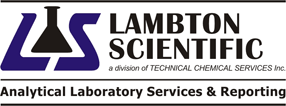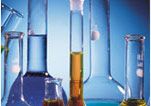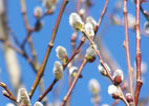TCLP Analytics

When it comes to transporting wastes, know before you go.
TCLP (pronounced “Tee-Clip”) stands for “Toxicity Characteristic Leaching Procedure”. It is a North American-wide standardized procedure, (US EPA Method 1311, in Ontario, cited under Reg. 347 Schedule 4) used to characterize waste as either non-hazardous or hazardous, “Leachate Toxic”, for the purpose of disposal. Its methodology is ideal for wastes transported throughout North America, and is applicable to all non-exempt wastes in Ontario removed off-site. It is also applicable to all matrices ranging from aqueous wastes, non-aqueous sludges, soils, solid wastes and industrial by-products -- i.e. wastes ranging from 0 to 100% solids content. It is the waste generator’s responsibility to make the determination whether the waste generated meets the definition of hazardous waste. Getting it wrong can prove a costly mistake.

Here’s how TCLP addresses the problem.
The TCLP leaching procedure is essentially an analytical method to simulate leaching through a landfill. If a pile or load of waste is subjected to the ambient environment (weather and biological decay processes) what would “leach” out of that waste, at what concentration and what would be the potential impact on the local environment?
TCLP uses mildly acidic pH, acetic acid solution(s) as the extraction fluid to answer these questions. Acetic acid is used because it is the predominant acid generated from biological decay processes. The waste sample is leached for an 18-hour period. The resulting slurry is filtered and the aqueous filtrate is considered to be the TCLP extract. (TCLP extracts typically have final pHs ranging from 5.0 to 6.0 due to the mildness of extraction fluid(s) used.) This extract is then analyzed for various analyte groupings and individual contaminant concentrations are compared to the TCLP maximum allowable concentrations as specified under O Reg. 347 Schedule 4.
Results you can see
TCLP contaminant (analyte) groupings are:
-Metals (10)
-Anions (4)
-Semi-Volatiles (both Acid & Base-Neutral extractables) (15)
-VOCs (Volatile Organic Compounds - VOCs) (13)
-Pesticides & Herbicides
-Miscellaneous highly toxic compounds
Reported TCLP concentrations should not be confused with Total or Bulk analyses of the waste, especially for metals. Total/Bulk metals analyses employ much more severe digestion procedures using a combination of powerful acids, and metals concentrations are typically orders-of-magnitude higher than TCLP metal concentrations.
Targeting for economy
Since it is the generator’s responsibility to determine if a waste is hazardous, a common question is: “Do I have to test for all the chemicals regulated under the TCLP procedure?” Rarely is a waste sample analyzed for the complete Schedule 4 TCLP listing. Testing would be prohibitively expensive and time consuming if it were.
Instead, clients specify which analyte grouping they want targeted, based on their knowledge of the waste, the waste generation process involved and the potential contaminants it may produce. Lambton Scientific’s experienced staff can help in these initial assessments as well as every other facet of TCLP analytics.
Lambton Scientific: Providing Total TCLP service
For years Lambton Scientific has provided high quality TCLP testing and analysis. Here’s how:
- Lambton Scientific has the capacity to perform 18 individual TCLP extractions per day with its two TCLP extractor units.
- Lambton Scientific can perform a daily total of 8 ZHE extractions for volatile organics with its eight “Zero Headspace Extractor” units.
- Lambton Scientific can provide next-day RUSH service. If waste samples are received by mid-afternoon on Day 1, TCLP set-ups can be performed same day, waste can be extracted/leached overnight (18 hours) and TCLP -- metals, anions and VOCs -- can be completed by end-of-business Day 2 (total 24 hours). Rush semi-volatiles typically require an additional day.
- Lambton Scientific has developed TCLP methodologies to handle difficult waste samples typical of the Sarnia area:
- Oily solids / sludges
- Soils / clays / solids with a high carbonate content
- Solvent laden wastes
- Biosolids / sludges
- Lambton Scientific has invested in superior stainless steel filtration equipment (instead of glass fibre filters cited in the original TCLP method) for improved filtration of difficult oily sludges and emulsion samples that are so common in Sarnia’s petrochemical wastes.
- Lambton Scientific compiles TCLP analytics into a customized Certificate of Analysis report. Any concentrations exceeding the “Leachate Quality Criteria” are highlighted and flagged, and Lambton Scientific will contact the client, making them aware of regulatory disposal requirements.
Lambton Scientific. All you need to know.
With the experience and technology to analyze Sarnia wastes and the capacity to cut down on wait times, Lambton Scientific can save you both time and money. If you have waste materials that need analysis, or have any additional questions about the analysis of waste characteristics and our analytical laboratory capabilities, please contact Lambton Scientific at info@lambtonscientific.com or 519-344-4747.
Click here to go back to the newsletter.





